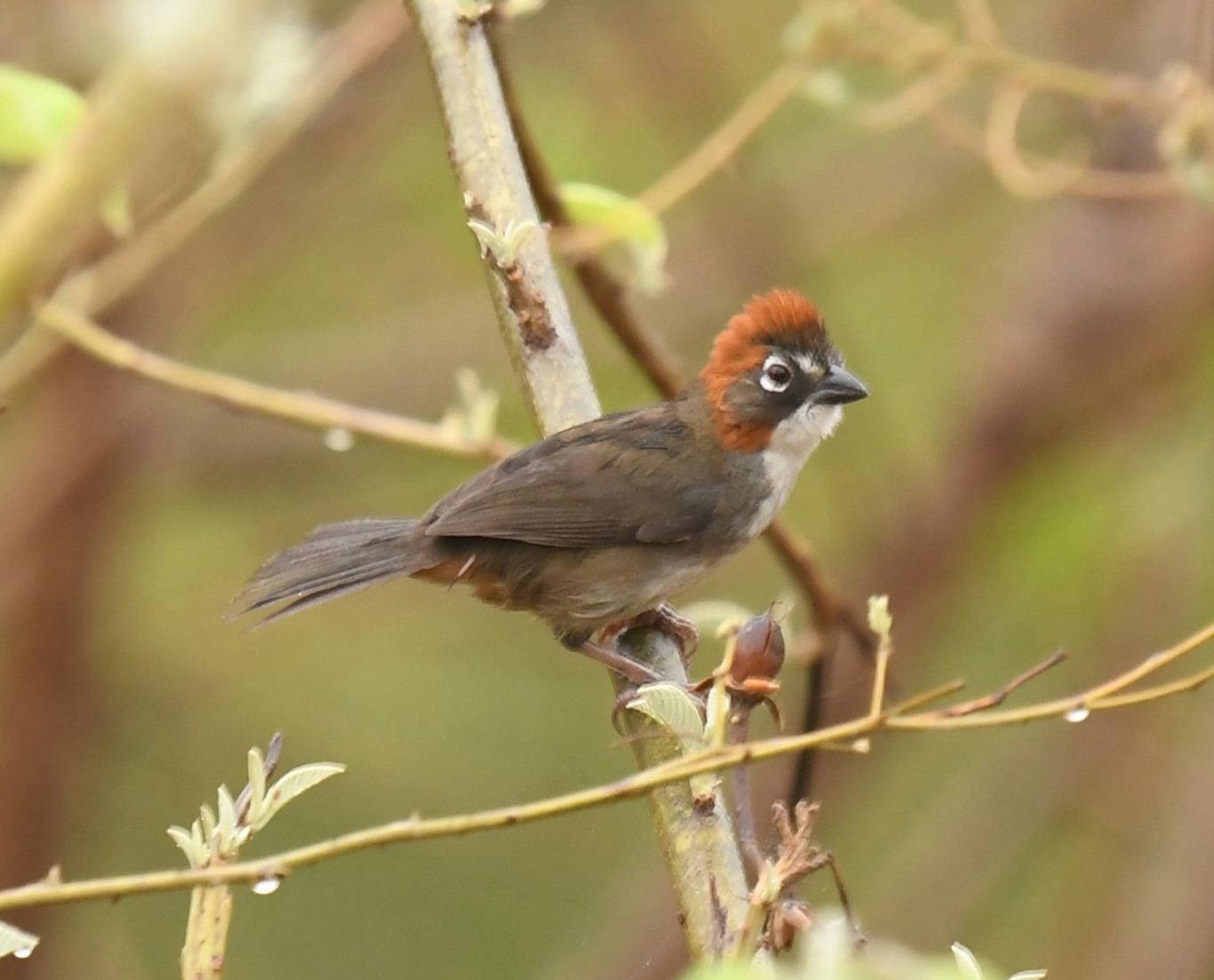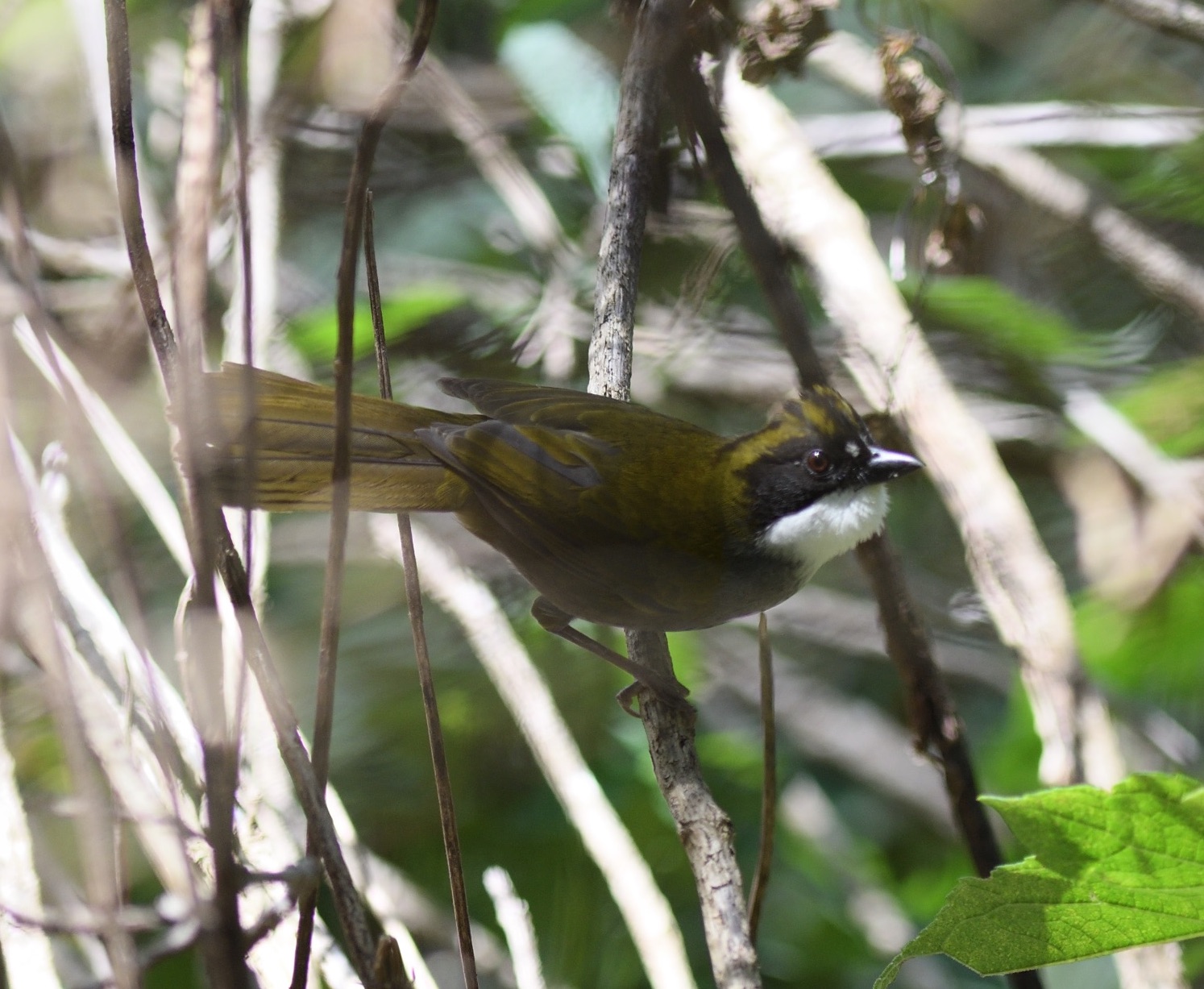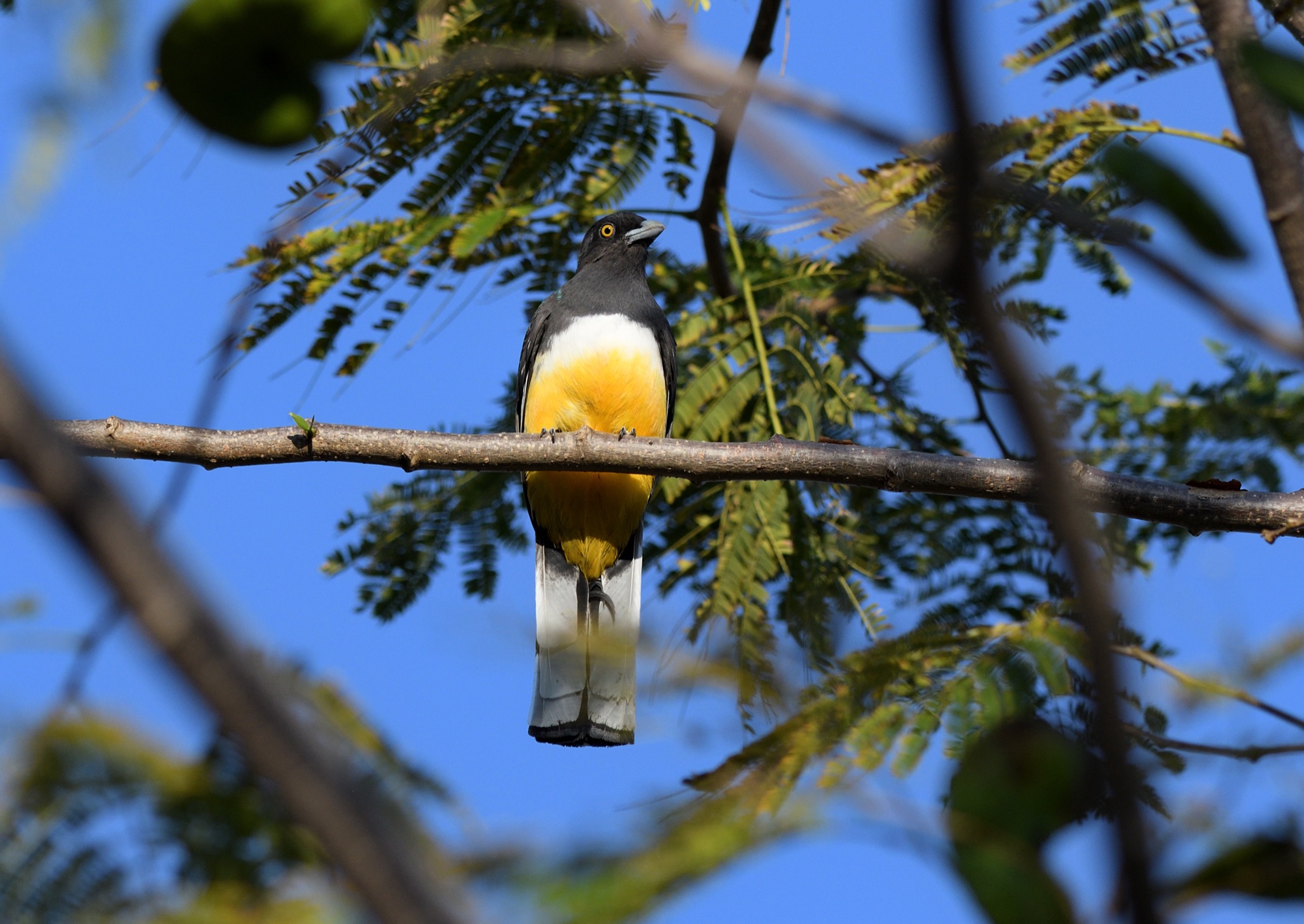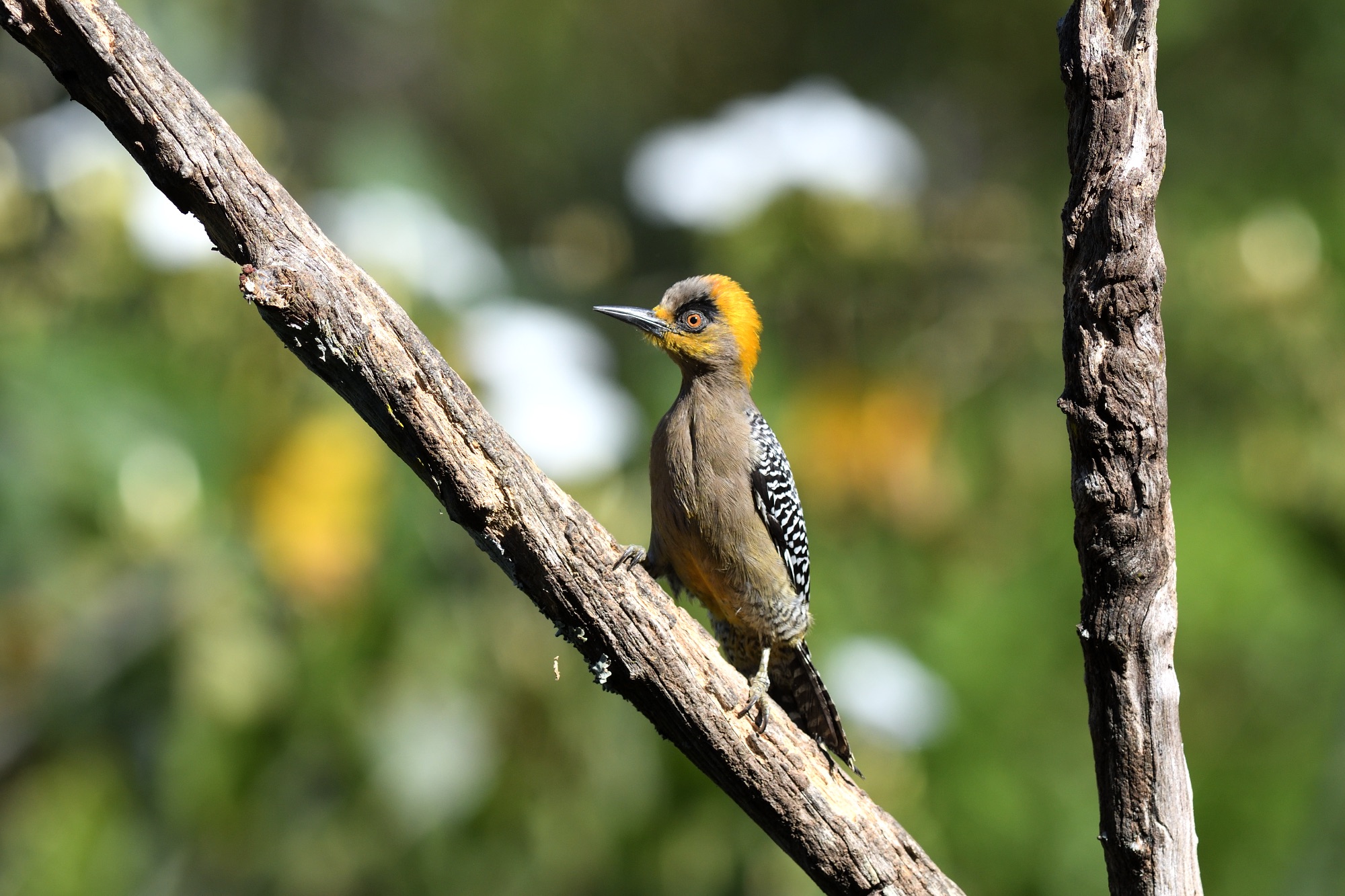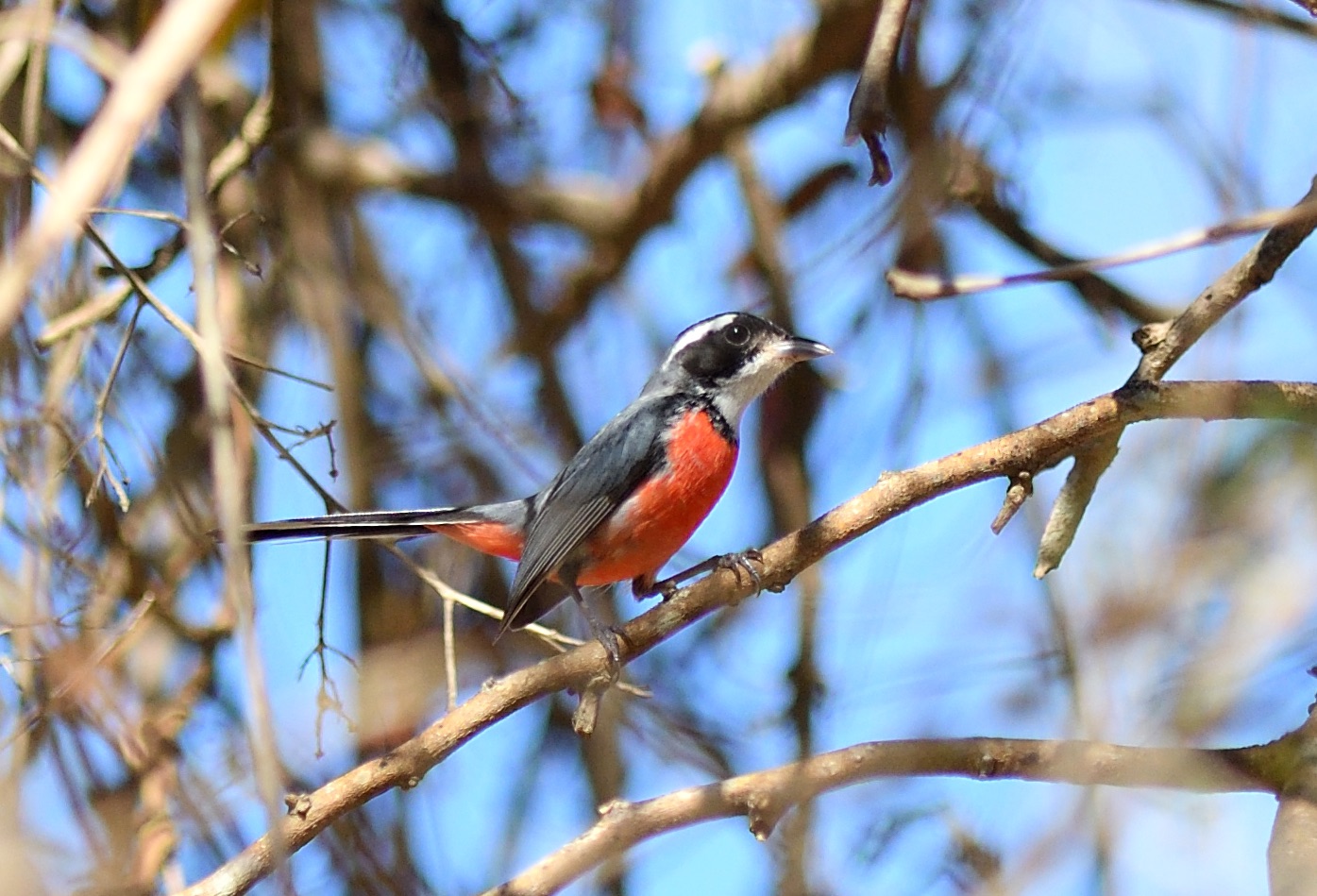WEST MEXICO BIRDING ADVENTURE 2023
Day 1 ARRIVAL IN MAZATLAN, MEXICO - 11th March
Upon arrival in Mazatlan we’ll start heading up the old free-highway into the Sierra Madre Occidental. We’ll have time to do some birding in the hills at the start of the highway, looking for birds such as Red-breasted Chat and Purplish-backed Jay, then stop for gas at Concordia (the last gas station), before heading up the highway until we reach the historic mining-town of Copala, where we'll check into the Hotel Daniel's for the night.
Day 2 PANUCO ROAD - DURANGO HIGHWAY
Early this morning we'll bird the Panuco Road, a dirt road that leaves the Durango Highway close to Copala and heads to another old mining town. This road is famous among birders, and with good reason - the first 3 km are especially birdy. Among the highlights are Rufous-bellied Chachalaca, Elegant Quail, Mexican Parrotlet, Lilac-crowned Parrot, Colima Pygmy-Owl, Golden-crowned Emerald, Berylline Hummingbird, Citreoline Trogon, Russet-crowned Motmot, Flammulated Flycatcher, Black-throated Magpie-Jay, Purplish-backed Jay, Happy & Sinaloa Wrens, Black-capped Gnatcatcher, Blue Mockingbird, Fan-tailed and Rufous-capped Warblers, Blue Bunting, Rusty-crowned Ground-Sparrow, Five-striped Sparrow, Blue Bunting, Yellow Grosbeak, Lilac-crowned Parrot and fly-over (and sometimes feeding) Military Macaws.
Other commoner species could include Ruddy Ground-Dove, Ferruginous Pygmy-Owl, Gila Woodpecker, Streak-backed Oriole, Curve-billed Thrasher, Long-billed Starthroat, Cinnamon Hummingbird, Nutting’s Flycatcher, Black-capped Gnatcatcher, Lucy’s Warbler, Bell’s Vireo, Green-tailed Towhee and Pyrrhuloxia. Birding along the way in tropical deciduous habitat could produce Sinaloa Crow, Harris’s Hawk, Yellow-winged Cacique, Black-throated Magpie-Jay, Purplish-backed Jay, Red-breasted Chat, Fan-tailed Warbler, Rufous-backed Robin, Blue Mockingbird, Thick-billed Kingbird, Orange-billed Nightingale-Thrush and maybe even a Black-capped Vireo.
We'll return to our hotel to pack up, and then continue up the highway to the higher country. We'll spend the rest of the day birding our way along the road, until we get to the town of El Palmito, where we may get a bite to eat, and meet the managers of the cabins at the Tufted Jay Reserve. The cabins are situated on the top of a mesa a few kilometers from town. Before turning in for the night, we'll bird around the cabins, and finish with some owling as Whiskered Screech-Owl can sometimes be found close to the cabins, and we could track down a Mexican Whip-poor-will as well.
Day 3 DURANGO HIGHWAY
We’ll spend the morning birding in the Reserve, where it's possible to see most of the specialties of the area; we will try to find roosting Stygian Owl, and some stellar Mexican endemics – Mountain Trogon, White-striped Woodcreeper, Tufted Jay, Russet Nightingale-Thrush, Blue Mockingbird, Green-striped Brushfinch, Rufous-capped Brushfinch, Red Warbler, and Red-headed Tanager, along with many other specialties, and even have a chance at some potential rarities, such as Eared Quetzal, Thick-billed Parrot, and Aztec Thrush.
Other possibilties include many stunning species and most of them endemic or near-endemic such as the stunning Red Warbler, Golden-browed Warbler, Grey-crowned Woodpecker, Pine Flycatcher, Grey-collared Becard. With luck we may come across a mixed feeding flock that could be ablaze with colour and hold such species as Eastern Bluebird, Hepatic Tanager, Painted and Slate-throated Whitestarts, Crescent-chested Warbler, Red-faced, Olive, Grace’s, Townsend, Hermit, Audubon's, Nashville, Rufous-capped and Black-and-white Warblers. At lower altitudes and back down the slope to some drier oak and transitional tropical forest habitat we will search for Military Macaw and a host of other spectacular birds such as Colima Pygmy-Owl, Arizona Woodpecker, Rusty-crowned Ground-sparrow, Rusty Sparrow, Grey Silky-Flycatcher, Hammond’s and Cordilleran Flycatchers, Golden, Bell’s, Hutton’s, Cassin’s and Plumbeous Vireos, White-throated Robin, Brown-backed Solitaire, Mexican Chickadee, Pine Flycatcher, Brown-throated Wren, Black-vented Oriole, Western Tanager, Black-headed Grosbeak, Blue Bunting, Yellow-eyed Junco, Black-headed Siskin and hummingbirds such as Violet-crowned, Berylline, Rufous, White-eared and Blue-throated. We even have our first chance at finding Bumblebee Hummingbird and the gorgeous Red-headed Tanager.
At mid-day, we'll head into the town of El Palmito to eat. For the afternoon we’ll bird our way further east along the highway into the state of Durango, and end up in the late afternoon at the spectacular overlook at Espinazo del Diablo, where the view both north and south along the crest of the Sierra Madre seems to stretch forever. We'll return to the cabins for the night, and enjoy an evening snack made in the kitchen of one of the cabins.
Day 4 DURANGO HIGHWAY
This morning we’ll leave the cabins early and bird our way further east along the highway into the state of Durango, out to the spectacular overlook at Espinazo del Diablo, where the view both north and south along the crest of the Sierra Madre seems to stretch forever. Tufted Jays and sometimes other surprises can be seen there. Continuing further east, we’ll head into the highest parts of the mountain range, where the terrain becomes a plateau of rolling hills with pine forests and grassy meadows, punctuated by occasional peaks. The birds we find will change, too, with species such as the endemic Striped Sparrow, and also Mexican Jay, Red Crossbill, and occasionally Evening and Hooded Grosbeaks. We’ll bird our way to the town of El Salto, where we’ll check into a good hotel and enjoy a meal at their fine restaurant.
Day 5 EL SALTO - SAN BLAS
This morning we’ll go to a nearby private ranch where a bunch-grass meadow has been discovered to have a small population of the endemic Sierra Madre Sparrow, one of Mexico’s rarest birds. We’ll look for the sparrow, and then for any other birds we might be missing, perhaps even Eared Quetzal, that is known to nest not far from El Salto. After lunch, we’ll head out of the sierra on the new toll highway, marveling at this wonder of engineering that gives us a quick route to our next destination, San Blas. Overnight San Blas.
Day 6 SAN BLAS
Today, we’ll spend our morning in the sensational new birding location of San Blas - Tecuitata. The shade-coffee plantation here has almost completely replaced the more famous birding site at La Bajada as the place to see birds of the foothills overlooking the coast. The habitat is identical, and the birds largely the same, but the layout of the location at Tecuitata is much friendlier for birders. Cobblestone roads climb the ridges through coffee groves allowing views into the canopy of large trees on the slopes below the roads. Parrots, trogons, hummingbirds, woodpeckers, becards, and many songbird species abound, with many endemics and other highly sought birds possible, including Grey-crowned Woodpecker, Gray-collared Becard, San Blas Jay, and Rosy Thrush-Tanager. Rarities such as Black Hawk-Eagle are also seen there regularly.
After having lunch at Tecuitata, we’ll bird a mix of habitats on our way back to San Blas, along the road to the Crocodile Farm, and in the nearby fields and wetlands. Here we find drying lagoons, streams, mudflats, mixed with agricultural land and thorn scrub thickets, where we’ll look for shorebirds, raptors, sparrows, seedeaters and more. Overnight San Blas.
Day 7 SAN BLAS
This morning we’ll head north of town, where in a few minutes we’ll arrive at the village of Chacalilla, situated on top of a broad hill overlooking the extensive mangrove swamps and lagoons near San Blas. The village site is probably the oldest inhabited site in the San Blas area – artifacts found in the village have been dated to at least 5000 years ago, and many of the homes are built upon the foundations of ancient ruins. As a birding site, Chacalilla is one of the hot new discoveries of San Blas – a place with incredible birding that was literally unknown only a few years ago. Trails from the village lead across the hill through mixed agricultural land and patches of thorn forest on down the hill into the mangroves themselves. A morning here is incredibly birdy, with a list of well over 100 species likely before noon – including lots of San Blas specialties and Mexican endemics. It’s an excellent place to actually see, not just hear, the elusive Lesser Ground-Cuckoo.
After lunch, and a siesta in your hotel, we’ll take a boat trip on the San Cristobal Estuary, and up a side channel to the springs at La Tovarra, returning after dark to look for night birds. An evening and night trip to La Tovarra is one of the must-do experiences in San Blas. It’s worthwhile just from the exotic look and feel of the trip, but can also produce some great birds such as Boat-billed Heron, Bare-throated Tiger-Heron, and possible Rufous-necked Wood-Rail. Recently, we’ve had good luck finding Spotted Rail as well. The return trip in the dark is probably the best place in the world to see Northern Potoo and we may see many! Overnight San Blas.
Day 8 SAN BLAS - CERRO DE SAN JUAN
We’ll spend some time early this morning looking for any birds we might be missing from around San Blas before leaving town and heading for the high country on Cerro de San Juan.
Cerro de San Juan is the remnant of an ancient volcano that rises up to over 2200 meters of elevation a short way inland to the southeast from San Blas. There’s a road that goes up the mountain from the north side, crosses an area of open meadows in an old crater where a recreational property, called Rancho La Noria, is located, and then continues down the humid southwestern slope to the town of El Cuarenteño and beyond.
The main draw is the forests of pines and oaks, with open patches and wildflower thickets. Many species not found elsewhere in the San Blas area can be seen here such as Rufous-bellied Chachalaca, Elegant Quail, Colima Pygmy-Owl, Mexican Woodnymph, Bumblebee Hummingbird, whilst commoner species include Sinaloa Crow, San Blas Jay and Yellow-winged (Mexican) Caçique. And it’s one of the best places in the world to see the endemic Mexican Woodnymph. Some very rare birds for the area are always possible, like Singing Quail, Eared Quetzal and Aztec Thrush.
We will take advantage of the excellent birding in these areas during the day, eating lunch at Rancho La Noria, and checking into the comfortable cabins there, where we’ll spend the night. We continue birding the mountain after lunch, returning in the evening for dinner at the cabins. As night falls we will search for Mexican Whip-Poor-Will, Eared Poorwill, Whiskered Screech-Owl, and perhaps even the enigmatic Cinereous (Mexican Barred) Owl, before retiring to our cabins for a cozy night’s rest. Overnight La Noria.
Day 9 CERRO DE SAN JUAN - CIUDAD GUZMAN
We’ll do some morning birding on Cerro de San Juan, looking for anything that we missed. After a late breakfast, we’ll pack up and start on the four-hour drive south to Ciudad Guzman. The highway passes right through some very large seasonal playa lakes that can have thousands of wintering waterfowl and shorebirds. After checking into your picturesque hotel, located outside the city at the base of the volcano, Nevado de Colima, if daylight allows, we may do some afternoon birding at the marshes around town, where we may find the endemic Aztec Rail, and see truly staggering flocks of Yellow-headed Blackbirds. Overnight Ciudad Guzman.
Day 10 VOLCAN DE NIEVE
We’ll start early this morning for a full day on Nevado de Colima, the Volcan de Nieve (Snowy Volcano). This dormant volcano rises up to 4260 meters of elevation, and frequently has snow on the top during winter, in contrast to its fiery neighbor. The tops of the twin volcanoes of Colima are a Mexican national park, but even the road going up the mountain outside the park has excellent birding. We’ll reach the highest elevation of our trip today, going above the 3000 meter level. The forest on the mountain is a great place to find Long-tailed Wood Partridge, Mexican Violetear, Chestnut-sided Shrike-Vireo, Grey-barred Wren, Collared Towhee, Red Warbler, Cinnamon-bellied Flowerpiercer, and many other species.
As the afternoon shades into evening, we’ll come down the mountain for a fine dinner in town, and a night’s rest at our peaceful hotel.
Day 11 COLIMA AREA
We’ll spend the early part of this morning back on Nevado de Colima, to look for anything we’ve missed, or improved views of birds we just glimpsed – always an issue in the forest. By mid-morning we’ll head back to our hotel to enjoy the famous “Taquizo-style” breakfast/brunch that they offer. Afterwards we’ll check out of the hotel, and make the short, one-hour drive to Colima City.
After checking into our hotel, we’ll head over to a tall hill south of the city where the dry forest is home to many species, from Lesser Ground-Cuckoo, Lesser Roadrunner, to the stunning Orange-breasted Bunting. You may even see the endemic Colima Pygmy-Owl, actually in Colima! We’ll enjoy a spectacular view of the surrounding countryside, including the Colima volcanoes, as we watch sunset from the summit. After it gets dark, we’ll look for the endemic Balsas Screech-Owl, a specialty bird of this location. Afterwards, we’ll return to our hotel in Colima City for dinner.
Day 12 VOLCAN DE FUEGO
We will spend all day today day on Volcan de Colima; Volcan de Fuego (Volcano of Fire), whose smoking top dominates the scenery. This is one of the most fantastic birding sites in Mexico. The seaward-facing slopes have moister, almost cloud forest-like habitat that contrasts with the drier pine-oak forests of its neighbor. A great variety of birds can be found here, including the endemic Banded Quail, Amethyst-throated Hummingbird, Transvolcanic Jay, Gray-breasted Wood-Wren, Colima Warbler, and many more. We may be lucky enough to stumble upon a feeding flock of Aztec Thrushes, or even glimpse the elusive Scaled Antpitta.
Day 13 VOLCAN DE FUEGO - COLIMA AREA
This morning we’ll bird on the west face of the Volcan de Colima, at the picturesque Laguna Maria. The area around the lake has a wide mix of habitats, from deep forest to open fields, from marshy wetlands to thorny dry forests. Accordingly, it can be a very birdy place. In the morning, there’s often an impressive flight of Lilac-crowned Parrots heading from their night roost to daily feeding trees.
After lunch and a siesta break, we’ll head to an area of dry scrub forest in the countryside southwest of town, looking for the endemic Black-chested Sparrow. We may find West Mexican Chachalaca, White-throated Magpie-Jay, Orange-breasted Bunting, and other good birds there. In the evening, we can try again for the Balsas Screech-Owl, if we were unsuccessful two nights before.
[Note: if we decide that it would be worth another trip up the main road to Volcan de Colima, we can do that this day, and visit Laguna Maria the following morning.]
Day 14 COLIMA - PARQUE ECOLOGICO LA CAMPANA - MANZANILLO
We’ll have another morning for birding near Colima City, with our exact plans depending upon the birds we still need. Most likely we’ll visit the large Parque Ecologico La Campana, just a short way from our hotel. This park combines ancient ruins with an extensive area of woodlands, including a riparian zone along a tumbling stream. Among the many birds there is a resident covey of the endemic Banded Quail that we’ll look for if we haven’t seen them before.
In the afternoon we’ll head for the coast at Manzanillo, and finish the day with some birding near town and overlooking the ocean. Overnight Manzanillo.
Day 15 PLAYA DEL ORO - GUADALAJARA
This morning we’ll do some birding on the nearby road that goes to Playa del Oro, which is an unbroken expanse of thorn forest that holds a great number of our desired species. The road goes through some low hills covered with dry coastal forest, and holds yet another community of birds that we haven’t yet explored, including West Mexican Chachalaca, Flammulated Flycatcher, White-throated Magpie-Jay, San Blas Jay, White-bellied Wren, and the neon-bright Orange-breasted Bunting.
After a lunch break in Manzanillo, we’ll travel back towards Guadalajara, perhaps with a few birding stops on the way. We’ll check into a hotel overlooking the beautiful Lake Chapala, Mexico’s largest natural lake, and just a short drive to the airport in Guadalajara.
Day 16 LAKE CHAPALA - END OF TOUR - 26th March
Your late departure time allows us to do some morning birding along the shore of Lake Chapala. It’s a good place to add two more endemic species to our list - Aztec Rail (if we still need it) and Black-backed Oriole, along with many other birds. Soon we’ll head to the airport to make your late afternoon flight out of Guadalajara, full of fond memories of the marvelous landscapes and birds of west Mexico.
All photos copyright Nick Bray/Zoothera Birding
Just hover your cursor over each photo for info.

